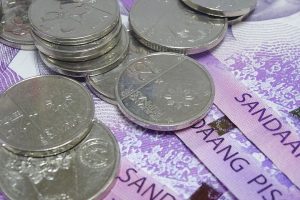LOAN GROWTH is seen to improve next year as the Philippine central bank is expected to further cut policy rates, S&P Global Ratings said.
“We think that the loan growth will start to pick up, but at a very slow rate,” S&P Global Director and Lead Analyst Ivan Tan said in a webinar on Wednesday.
“We think that most of the loan growth pick-up is going to come in 2025. That’s when we are forecasting the policy rate will be cut to 5% by next year.”
The Monetary Board last week lowered the target reverse repurchase (RRP) rate by 25 basis points (bps) to 6.25% from 6.5%, which was the highest rate in over 17 years.
BSP Governor Eli M. Remolona, Jr. earlier signaled the possibility of another 25-bp cut in either October or December.
Mr. Tan said the recent rate cut by the BSP is unlikely to have any immediate impact on loan growth.
“The Philippines is usually a country where the policy rate is 3%, give or take… So even with this 25-bp rate cut, a 6.25% policy rate versus what I would consider a normalized 3% rate is still quite high,” he said.
The country’s loan growth in the pre-pandemic period had averaged 10% to 12% annually, Mr. Tan said.
“In 2023, it only grew about 7% to 8%. By the Philippines’ standard, it’s very low. It’s very low because the policy rate in the Philippines was very, very high,” he added.
The central bank has raised borrowing costs by a cumulative 450 bps from May 2022 to October 2023 to tame inflation.
The latest data from the BSP showed that bank lending rose by 10.1% year on year to P12.09 trillion in June.
The bank lending growth in June was unchanged from May, which was the fastest pace since the 10.2% recorded in March 2023.
Mr. Tan also noted that loan growth patterns are likely to change.
“We have been observing a risk-on behavior where the Philippine banks are maintaining the large corporate loans, but growing almost twice as fast in the higher-using and higher-risk consumer segment,” he said.
“Just to note, the Philippine nonperforming loan (NPL) [ratio] is at about 3%. Consumer NPL, the delinquency rate is twice as high,” he added.
The banking industry’s NPL ratio eased to 3.51% in June from 3.57% in May. The bad loan ratio in May was the highest in nearly two years.
“We are watching that very closely because there’s kind of a risk-on behavior. Philippine banks are growing consumer loans faster to improve the yield, for yield enhancement purposes, but they are taking on incremental risk in the process also,” he added. — Luisa Maria Jacinta C. Jocson
